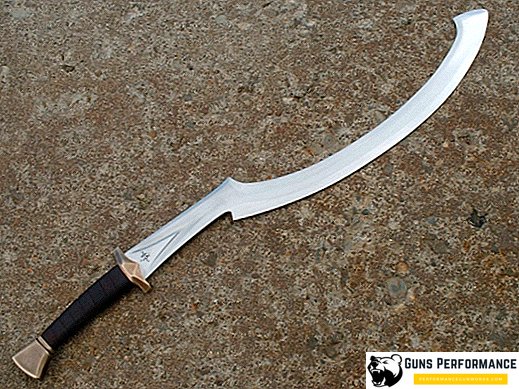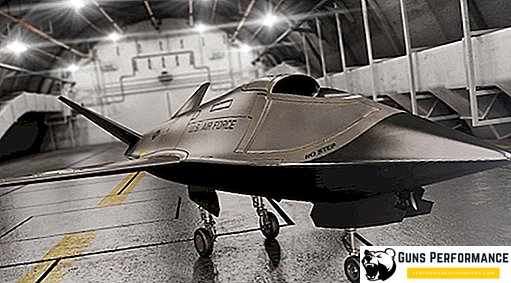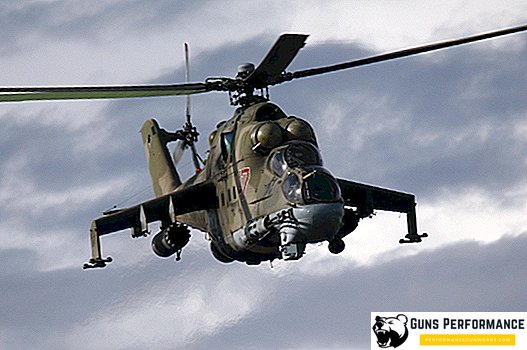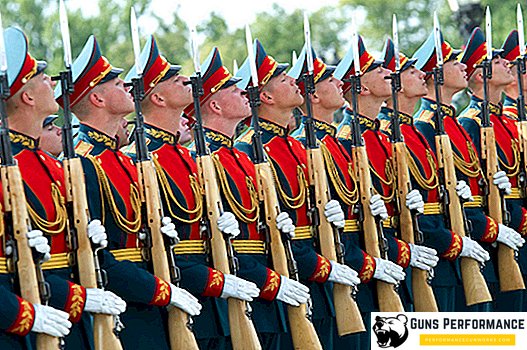We often judge historical events by found unique archaeological finds. Thanks to ancient artifacts, we have an idea of how the states of antiquity developed, how developed their culture, economy was, and how the political structure looked. Not the last place in the list of artifacts is occupied by military items and weapons. Today, archaeologists and historians from the findings, can judge how people had weapons in ancient times, and what success this or that civilization has achieved in the military field.

The richest collection of artifacts, which today is represented in many museums of the world, belongs to the era of ancient Egypt. This state was the most powerful and largest in antiquity. Due to its economic and socio-political structure, the Egyptian Kingdom dominated for two thousand years. The Egyptians were not only skilled farmers and builders. Egypt owes much of its success to military success.
The Egyptians managed to create one of the strongest armies of antiquity, in which elite divisions occupied a special place. Pharaoh’s army had different weapons on equipment, but the most famous was the khopesh, the sword of the Egyptian special forces. This edged weapon is considered to be the most well-known, extant. In museums, this is the most frequent exhibit in the exhibition of ancient Egypt. Dozens of films have been created about the legendary country of the pharaohs, where warriors fight on swords of a curve, crescent shape.
The history of the appearance of weapons khopesh
An Egyptian soldier, skillfully wielding a spear and a sword, represented a formidable enemy on the battlefield in ancient times. The infantrymen, armed with sharp crooked swords, delivered a staggering blow to the enemy in close combat, therefore it is considered to be a khopesh as the main armament of infantry in ancient Egypt.

Legendary weapons came to Egypt somewhere in the middle of the second millennium BC, in the era of the Middle Kingdom. The Egyptians were faced with formidable swords during a battle with the Hyksos who invaded the land of the pharaohs from the territory of present-day Palestine. These nomadic tribes, unlike the Egyptians, were armed with curved and sharp swords. While the Egyptian infantry fought with maces and bronze axes, the nomads in melee struck smashing blows with their crooked knives. After the defeat, the Egyptians adopted the battle tactics of their winners. The main weapon on the battlefield became chariots and warriors, armed with sickle-type swords. After the curve and sharp sword became the main weapon of the Egyptian army, the pharaohs not only won their territories, but also managed to conquer the neighboring countries.
Curved, sickle-shaped swords in the old days were almost the main weapon of the ancient armies. In many ways, this is explained by the social composition of the combat units, where the bulk of the army was composed of peasants. However, according to Egyptian historians, metal weapons were a luxury item. Not every ordinary soldier could have a bronze sword. Most likely, such swords belonged to elite combat units, palace guards or the protection of Pharaoh. The origin of the blade form has other versions. A more believable version is the transformation of a battle ax to a type of weapon capable of delivering slashes, and not just chopping and pointers. It is impossible to disregard the theory in which the ancestor of a khopesh is considered sappara, a weapon of the ancient Assyrians. Unlike the Egyptian sword, Assyrian sappara has a sharp edge on the inside of the bend, which speaks in favor of the agricultural function.
According to the latest version, the khopesh had a sickle shape taken from a peasant sickle. Such swords are often found in the excavations of ancient settlements of other civilizations. Probably affects not only the belonging of these weapons to the civilization of the states of the farmers, but also the high fighting qualities that swords of this form possessed. Swords of similar shape are equally convenient for cutting and for cutting. Compared to a battle ax and straight swords, the sickle blade inflicts deeper wounds and cuts.

The name of the sword, which became a symbol of ancient Egypt, translated from Egyptian means literally "foot of the animal." Already later, in other armies of the ancient states, such weapons can be found in the armament of warriors. Swords and daggers in the army of Alexander of Macedon had a curved shape and were called copies. Curved and curved swords were also the weapon of choice in the Persian army of King Xerxes.
Description khopesh
For military weapons in ancient times used bronze. It was the only available metal that could be mined in an almost open way and for melting which did not require much technological effort. Despite this, metal weapons were considered the prerogative of wealthy people. Only high military ranks could afford to have bronze knives and swords. Bronze is a fairly heavy metal, so a bronze khopesh is a heavy and at the same time durable weapon.
During excavations in the middle reaches of the Nile, ancient graves belonging to members of the Egyptian nobility were found. In the tombs, sickle-shaped swords were found in a well-preserved state. At more detailed hydrocarbon analysis in the bronze composition, impurities were detected. Such elements as ferroscilium and ferrosilicomanganese are commonly used in metallurgy to impart special strength and stability to the metal. Such research results indicate that in ancient Egypt, weapons skill stood at a high technological level.

Sickle-shaped sword was sharpened only from the outside. Less commonly found are double-edged swords, sharpened not only from the outside, but also having a cutting edge on the inside. Obviously, the method of using such weapons in battle suggested not only making chopping blows, but also cutting off the head and limbs of a fallen enemy. The length of the blade handle indicates that the khopesh was a two-handed sword. The length of the sword was on average 50-70 cm. Among the finds there are artifacts that have a long handle, and the blade itself reaches a length of about a meter.
The form of the sword suggests and way of carrying weapons. On many ancient frescoes you can find images of ancient Egyptian warriors who carry a curved sword on their shoulder. In some cases, when the blade was small, it was worn at the hip, at the waist. The weapon was kept without a scabbard. The weight of the sword was about 2 kg. There are artifacts with a large weight, reaching 3-4 kg. However, this is most likely a ritual weapon that was used in various ceremonies.
For reference: as a result of research conducted by employees of the London Historical Museum, it was possible to find out the effectiveness of the combat use of khopesh. The sword struck the pig carcass from different positions. During the inspection and study of damage, it was found that the proper use of a sickle sword in battle did not leave the enemy any chance. The wounds were deep and long. The edges of the wound were almost perfectly flat line, which hampered the subsequent healing of tissues.
Combat Hopes Application
Hopesh did not receive mass use. The main reason is the lack of expensive metal in such quantities to arm thousands of warriors. The main combat force of the ancient armies is infantry recruited from the poorest segments of the population. Marines, as a rule, were armed with bows, slings, spears and battle axes. Only on the equipment of elite divisions and cavalry there were bronze swords, axes and daggers.
Possession of the sword required special skills and abilities, so sickle-shaped swords were used only by trained troops. The form of the sword and its dimensions allowed to use it, both on foot, and in the chariots of war and in the cavalry. Massive and heavy khopesh, as a rule, was used to apply a sliding-chopping blow in the head and neck. With sufficient force of impact with a curved blade, it was possible to pierce a helmet and cut a wooden sword. The palace guards and the chariot leaders had large-sized weapons capable of delivering crushing blows to the enemy.

In addition to military use, khopesh was one of the most common weapons of execution in ancient Egypt. On the frescoes and reliefs in the tomb of Pharaoh Ramses III there are scenes depicting execution. Prisoners or criminals with a sickle sword cut off his head. It should be said that in ancient times, many peoples, with their favorite method of gathering evidence in the final victory over the enemy, were taken to cut off the fallen enemies and captives. Hopes, with its crescent-shaped curve, can be considered an ideal tool for this purpose.
Weapons, which became a symbol of ancient Egypt, was in high esteem and the nobility. The images often contain royal processions in which Pharaoh, priestesses and bodyguards participated. They are all armed with crooked swords that rest on their shoulders. Judging by the number of tools found in ancient tombs, curved swords were used in funeral ceremonies. In antiquity, there was often a tradition to lay in the grave with household items and weapons.

For armed forces and for ritual purposes, khopesh was used until the 4th century BC. At a later time, such weapons can be observed in the armament of other armies. Despite its effectiveness in battle, Egyptian swords are fashionably considered to be regional ethnic weapons. Curve swords were not widely spread in the ancient world. This was due to the inconvenience of the blade shape and the special specificity of using such weapons in battle.











